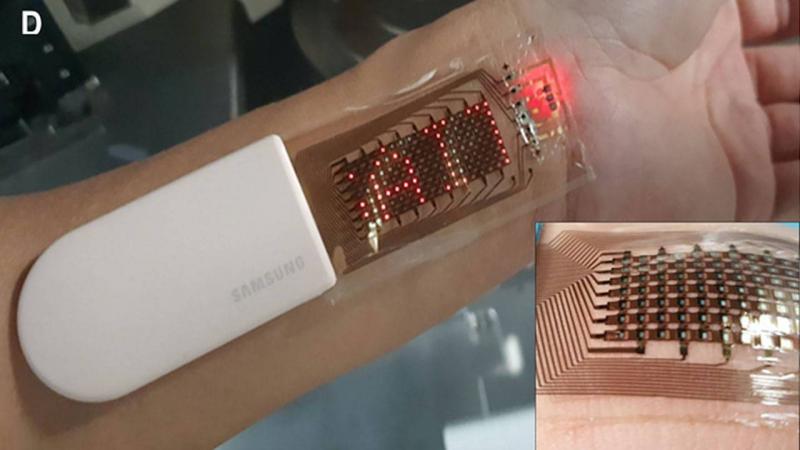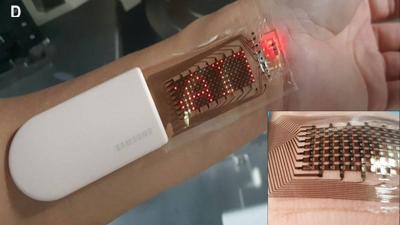South Korean company "Samsung" has announced the development of an "OLED" screen for human skin, equipped with an integrated heart rate monitor, and featuring flexibility that allows it to stretch up to 30%. According to a statement from Samsung, this new invention provides an early stage of more accurate measurements than currently available wearable devices, and for longer periods.
Notably, the electronics giant is convinced that its innovations could pave the way for the commercialization of wearable devices featuring large high-definition screens, expected to appear in all types of healthcare products, according to "Sputnik". As detailed in a new study reviewed by the journal "Science Advances", a team of researchers from Samsung's research and development center has created a wearable device with a flexible screen that provides stable measurements, even after being stretched up to 1000 times its normal length.
In the past, most devices with fixed shapes would fail or collapse under such significant physical stretching, but Samsung has overcome this technical hurdle by replacing the plastic material used in current rubber displays with "elastomer", a high-flexibility advanced material, and then modifying its molecular composition to enhance heat resistance while reducing stress caused by stretching, thereby allowing for the integration of semiconductors into the device.
The research team at Samsung also applied a stretchable electrode material (a cracked metal) that resists deformation in the rubber area. By successfully making the synthetic rubber more resistant to chemicals and heat, the team claims it has effectively demonstrated that stretchable devices can be equipped with sensors and semiconductors to monitor health, similar to those found in current wearable devices like the "Apple Watch".
By improving its quality, the researchers assert that their flexible device adapts better to movement by adhering to the wearer's skin, enabling continuous and accurate heart rate measurements. During their experiments, the scientists found that wrist movement did not deteriorate the performance of their technology, even with the device stretched by up to 30%. Despite this activity, the "electronic" skin seemingly succeeded in capturing a heartbeat signal that was 2.4 times stronger compared to a fixed silicon sensor.




